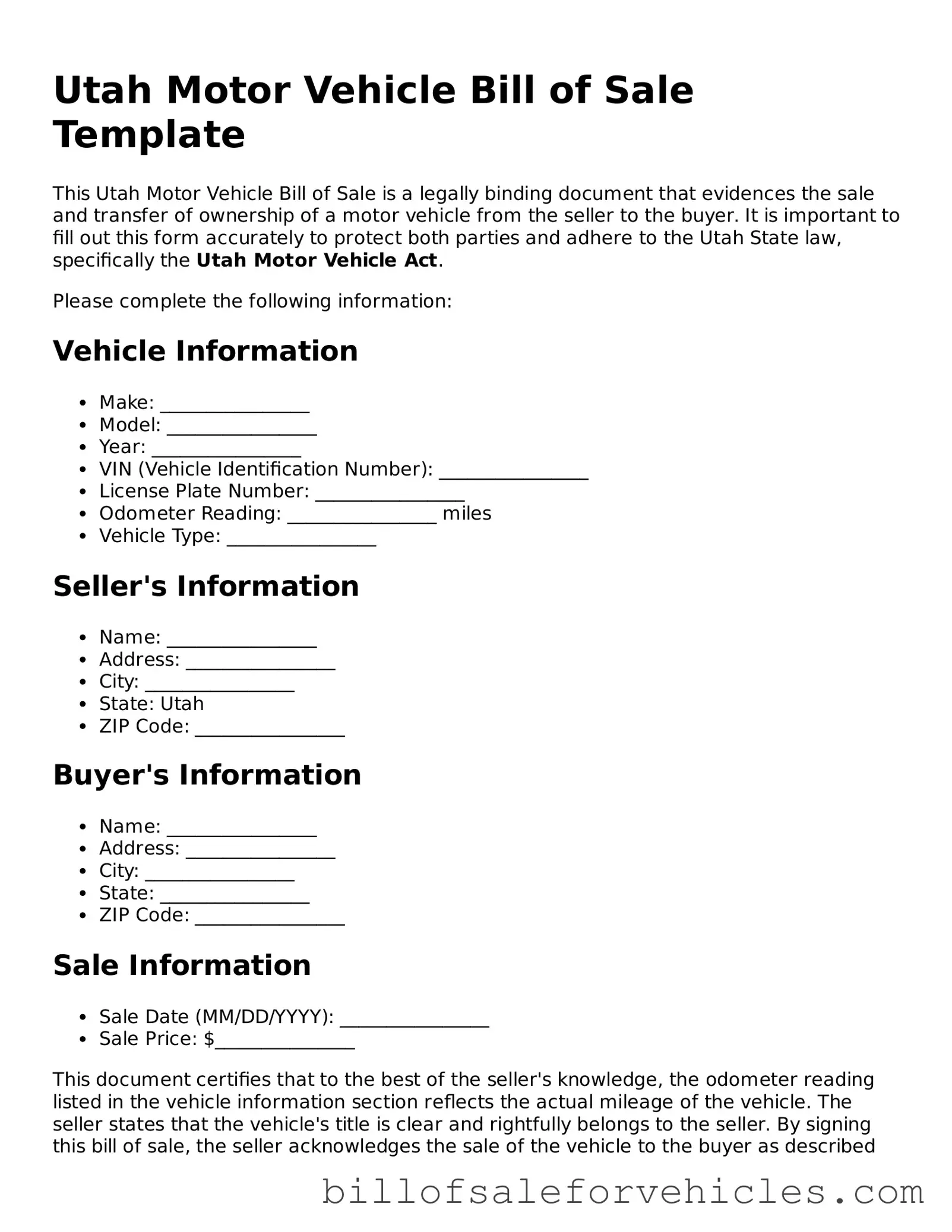What is a Utah Motor Vehicle Bill of Sale?
A Utah Motor Vehicle Bill of Sale is a legal document that records the sale and transfer of ownership of a vehicle from the seller to the buyer within the state of Utah. This form typically includes detailed information about the vehicle, the sale price, and the parties involved in the transaction.
Is a Motor Vehicle Bill of Sale mandatory in Utah?
In Utah, a Motor Vehicle Bill of Sale is not always mandatory for the sale of a vehicle. However, it is highly recommended as it provides a written record of the sale and can be very useful for legal and tax purposes.
What information should be included in the form?
The form should include the make, model, and year of the vehicle, the vehicle identification number (VIN), the sale date, the sale price, and the names and signatures of both the buyer and the seller. It may also include odometer readings and any terms or conditions of the sale.
Do both parties need to sign the Utah Motor Vehicle Bill of Sale?
Yes, both the buyer and the seller must sign the Utah Motor Vehicle Bill of Sale for it to be valid. Their signatures serve as a confirmation of the information stated on the form and the agreement to the sale.
Does the Motor Vehicle Bill of Sale need to be notarized in Utah?
No, notarization is not a requirement for a Motor Vehicle Bill of Sale in Utah. However, having the document notarized can add an extra layer of legal protection and authenticity if any disputes arise in the future.
What should I do after completing the Motor Vehicle Bill of Sale?
After completing the Bill of Sale, the buyer should submit a copy to the Utah Division of Motor Vehicles (DMV) as part of the vehicle registration process. Both parties should keep copies for their records to serve as proof of purchase and ownership.
How does a Motor Vehicle Bill of Sale protect the buyer?
The Bill of Sale protects the buyer by providing documented evidence of the vehicle's condition, the purchase price, and the legal transfer of ownership. It also helps to establish the buyer's ownership in case the previous ownership is disputed.
How does a Motor Vehicle Bill of Sale protect the seller?
For the seller, the Bill of Sale serves as proof that they have legally transferred the ownership and liability of the vehicle to the buyer. This can be crucial in preventing future legal issues concerning the vehicle.
Can a Utah Motor Vehicle Bill of Sale be used for selling a vehicle to someone out of state?
Yes, a Utah Motor Vehicle Bill of Sale can be used for selling a vehicle to someone out of state. However, the buyer must comply with the vehicle registration and titling requirements of their own state, which may differ from those in Utah.
